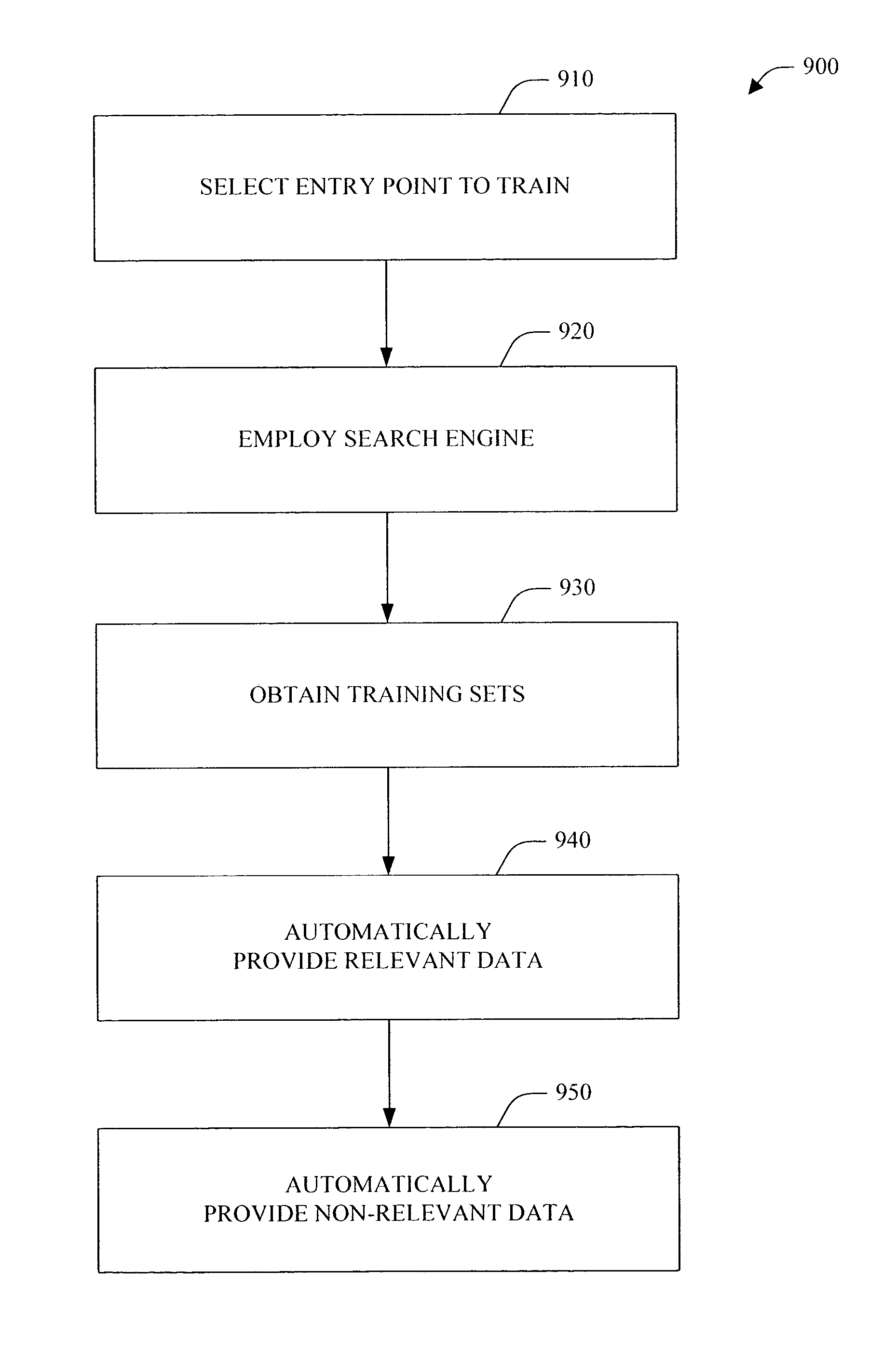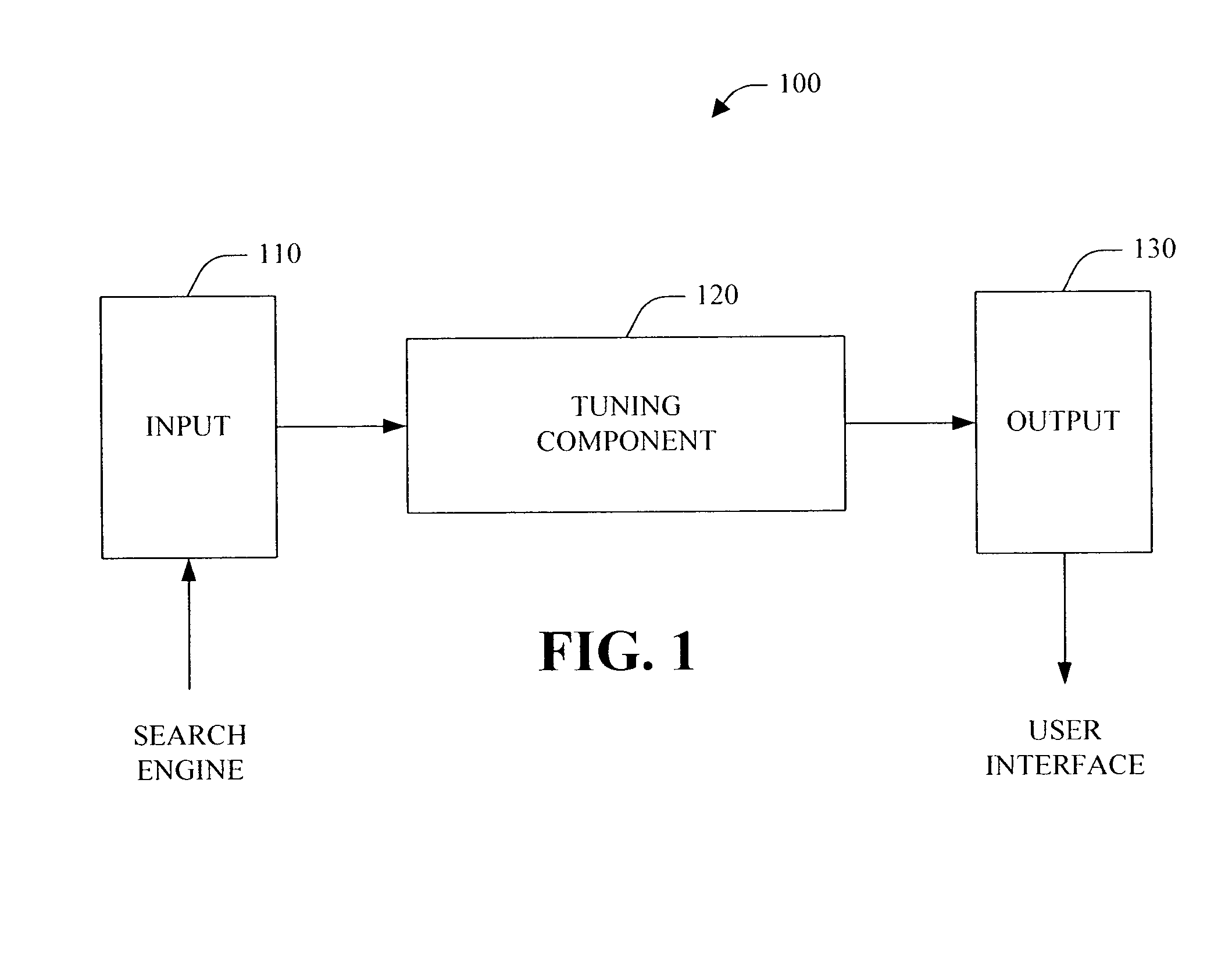Systems and methods to tune a general-purpose search engine for a search entry point
a general-purpose search engine and search entry point technology, applied in the field of search engine queries, can solve the problems of limited specialized search engine, time-bounded and expensive, and high cost of paper books, and achieve the effect of reducing the return of non-relevant data
- Summary
- Abstract
- Description
- Claims
- Application Information
AI Technical Summary
Benefits of technology
Problems solved by technology
Method used
Image
Examples
Embodiment Construction
[0025]The present invention relates to systems and methods that tune a general-purpose search engine in order to provide a user with ranked results related to the user's search context. The systems and methods employ a means to filter general-purpose search engine results to separate relevant data (e.g., data related to the search context) from non-relevant data (e.g., data unrelated to the search context) in order to mitigate presenting the user with the unrelated results or to rank unrelated results lower than relevant results. The filter can be manually and / or automatically be configured via providing training sets of relevant and non-relevant data associated with an entry point to the filter. Additionally, the systems and methods can employ a means to prioritize and rank the filtered results for presentation to the user. Various filtering and / or ranking techniques (e.g., statistically based) can be utilized in accordance with an aspect of the present invention, as described in d...
PUM
 Login to View More
Login to View More Abstract
Description
Claims
Application Information
 Login to View More
Login to View More - R&D
- Intellectual Property
- Life Sciences
- Materials
- Tech Scout
- Unparalleled Data Quality
- Higher Quality Content
- 60% Fewer Hallucinations
Browse by: Latest US Patents, China's latest patents, Technical Efficacy Thesaurus, Application Domain, Technology Topic, Popular Technical Reports.
© 2025 PatSnap. All rights reserved.Legal|Privacy policy|Modern Slavery Act Transparency Statement|Sitemap|About US| Contact US: help@patsnap.com



